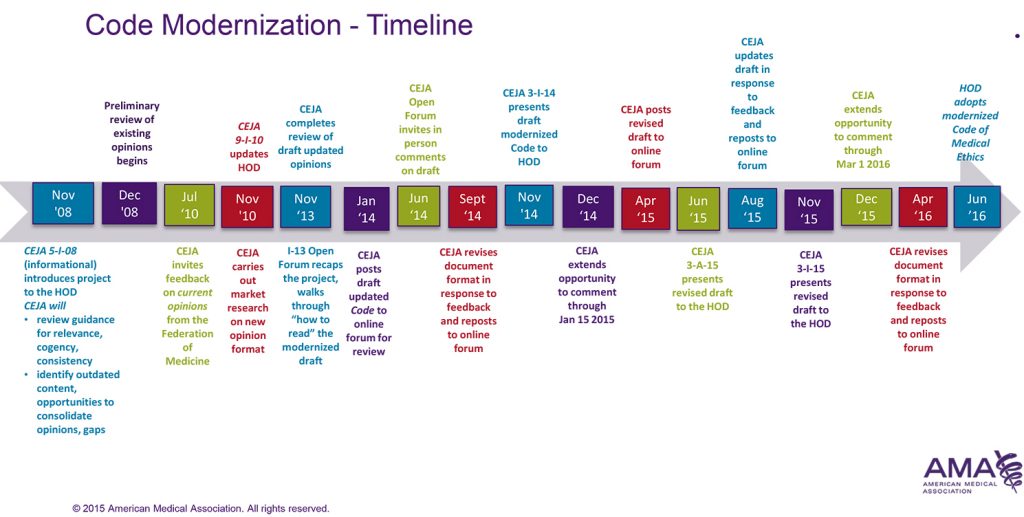Eight years ago, the American Medical Association’s (AMA) Council on Ethical and Judicial Affairs embarked on a comprehensive review of the AMA Code of Medical Ethics. What emerged after years of hard effort, intensive feedback and thoughtful revisions was a modernized version of the guide, which the AMA House of Delegates voted to adopt in June 2016. It represents the first major update since 2001 of the Code of Ethics, which was first established at the inaugural AMA meeting in 1847.
Reasons for the Update
The modernization was conducted to “ensure physicians have useful and effective ethical direction that keeps pace with emerging demands, new technologies, changing patient expectations and shifting health care priorities,” the AMA said in a statement. When the review effort began, the Code of Ethics was deemed to be “fragmented and unwieldy” and “individual topics were difficult to find,” said the authors of a Journal of the American Medical Association viewpoint piece in September.1
“Ultimately, the [updated] code reflects the professional values of medicine,” says Audiey Kao, MD, PhD, vice president of ethics standards at the AMA.
A Careful Process
Dr. Kao also notes that the original nine principles of medical ethics as defined by the AMA were not altered in the modernized code. Rather, the updates removed outdated language and redundancies, evaluated for relevance the science and medical practices contained within it, and enhanced guidance where reviewers determined it to be unclear.
Out of respect for the accumulated knowledge collected in the code since its genesis, the Council updated opinions only when it “judged guidance to be significantly out of step with current best ethics, biomedical science or the structures of contemporary healthcare.”2
For example, language related to treating patients with HIV was broadened to cover patients presenting with any disease status. “It clearly dated to the early AIDS epidemic,” says Bette Crigger, PhD, director of ethics policy and secretary to the Council on Ethics and Judicial Affairs for the AMA. And it was updated to encompass the scientific advances in genetics since the 1990s. “It’s not that the ethics had necessarily changed,” says Dr. Crigger.
Adding Team-Based Care
The updates to the code also address gaps identified during the comprehensive review process. This includes adding team-based care to reflect changes to healthcare delivery.
According to the AMA, “teams are defined by their dedication to providing patient-centered care, protecting the integrity of the patient-physician relationship, sharing mutual respect and trust, communicating effectively, sharing accountability and responsibility, and upholding common ethical values as team members.” They are “the preferred method for providing coordinated, cost-effective, high-quality health care [sic] for patients.”

